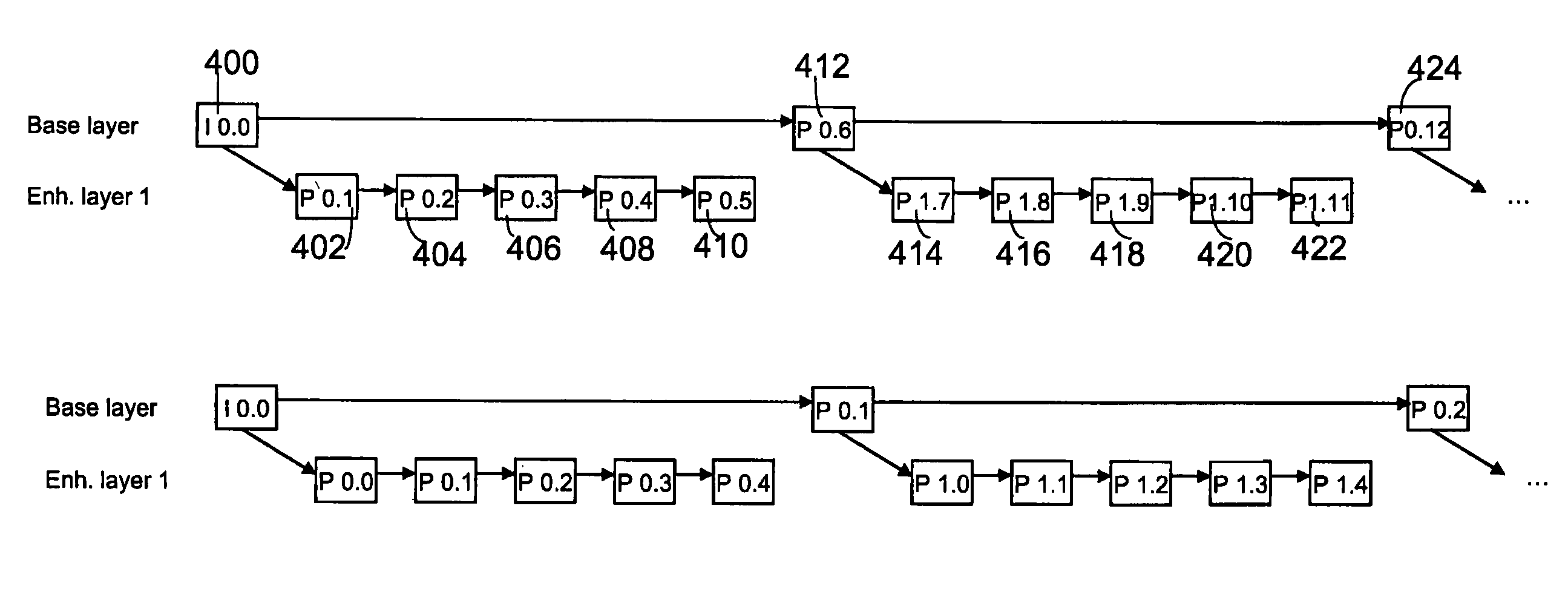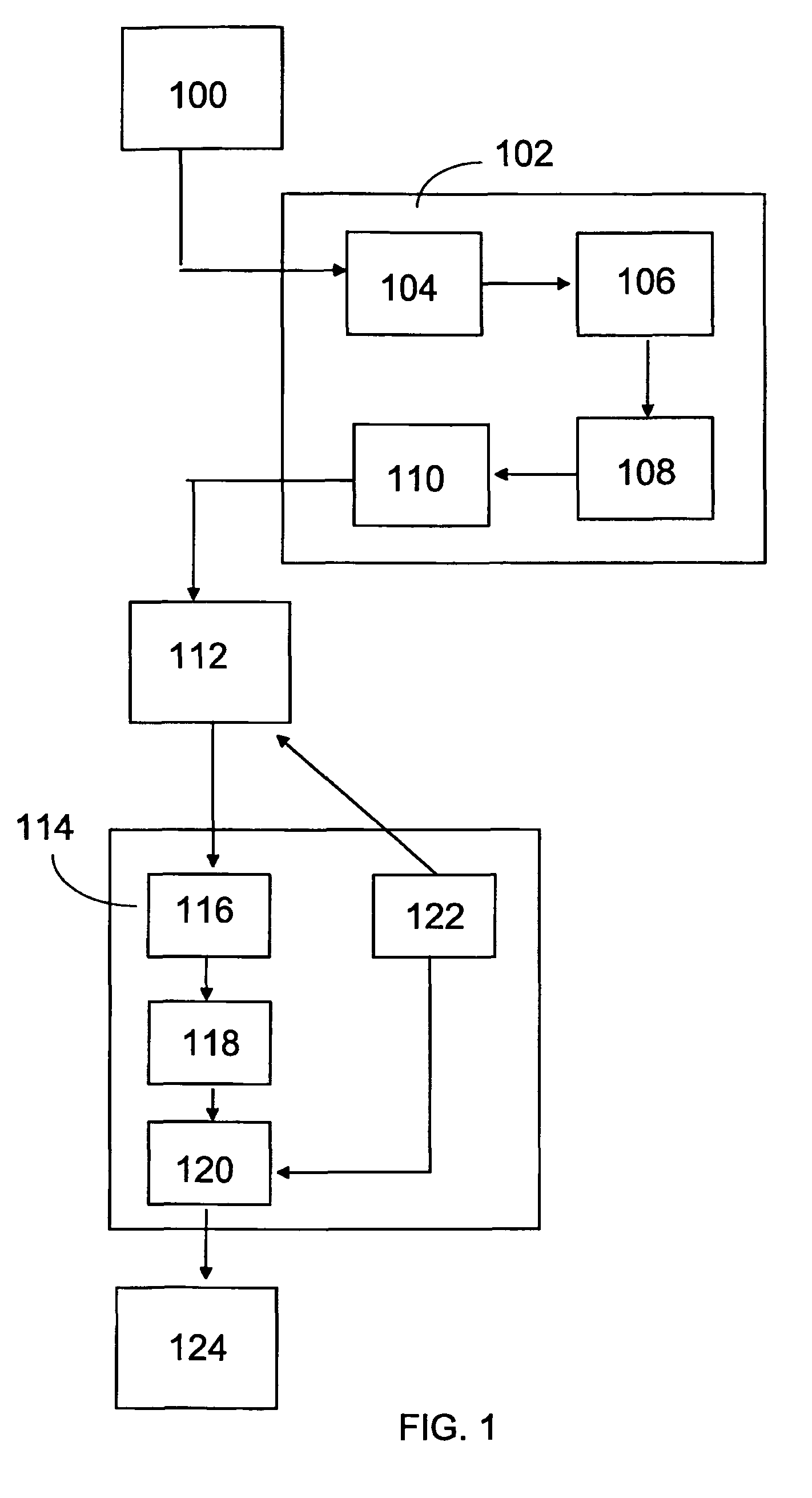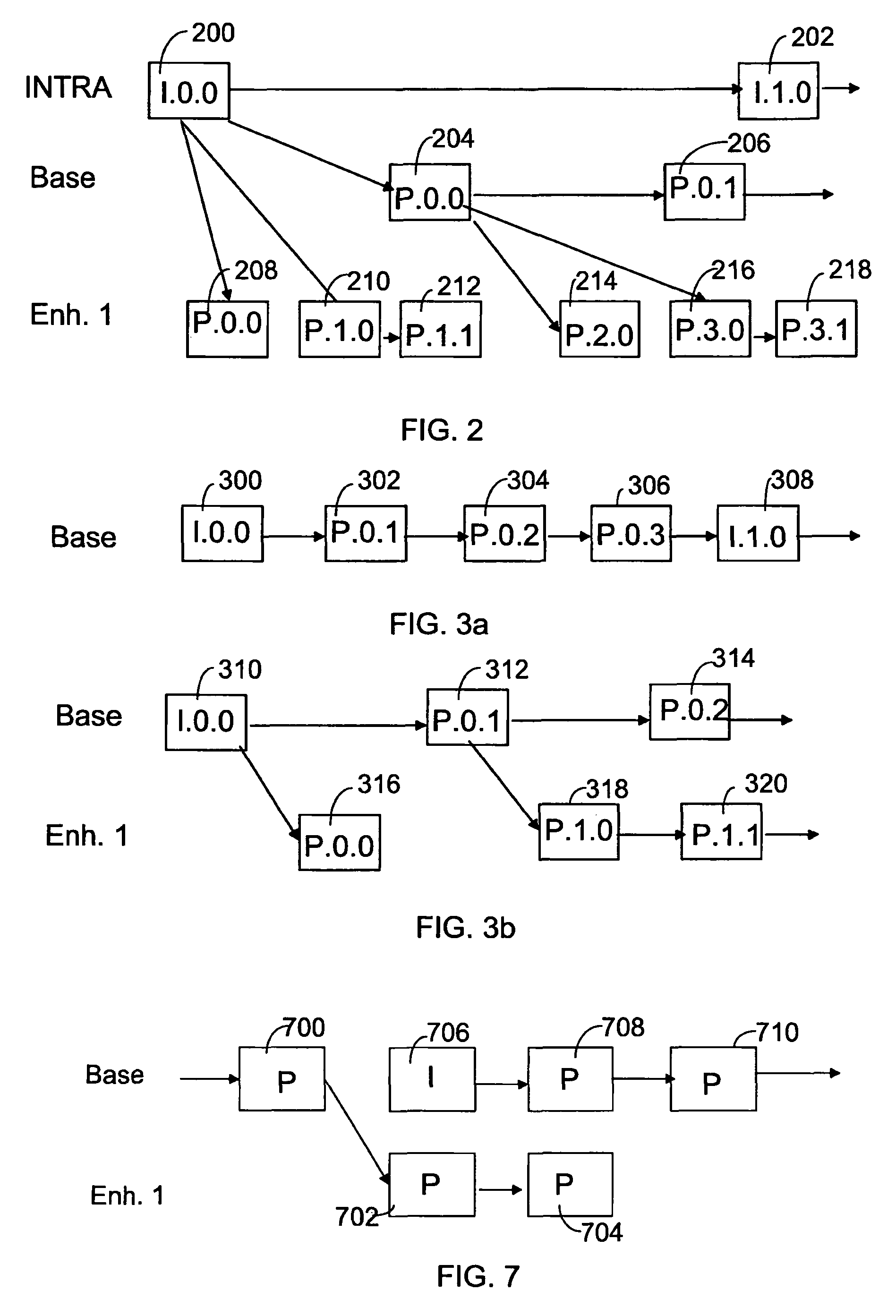Grouping of image frames in video coding
a video coding and image frame technology, applied in the field of video files, can solve the problems of large volume of multimedia files stored in the terminal, time-consuming transfer to the terminal, and large amount of storage memory capacity
- Summary
- Abstract
- Description
- Claims
- Application Information
AI Technical Summary
Benefits of technology
Problems solved by technology
Method used
Image
Examples
Embodiment Construction
[0030]In the following, a general-purpose multimedia data streaming system is disclosed, the basic principles of which can be applied in connection with any telecommunications system. Although the invention is described here with a particular reference to a streaming system, in which the multimedia data is transmitted most preferably through a telecommunications network employing a packet-switched data protocol, such as an IP network, the invention can equally well be implemented in circuit-switched networks, such as fixed telephone networks PSTN / ISDN (Public Switched Telephone Network / integrated Services Digital Network) or in mobile communications networks PLMN (Public Land Mobile Network). Further, the invention can be applied in the streaming of multimedia files in the form of both normal streaming and progressive downloading, and for implementing video calls, for example.
[0031]It is also to be noted that although the invention is described here with a particular reference to st...
PUM
 Login to View More
Login to View More Abstract
Description
Claims
Application Information
 Login to View More
Login to View More - R&D
- Intellectual Property
- Life Sciences
- Materials
- Tech Scout
- Unparalleled Data Quality
- Higher Quality Content
- 60% Fewer Hallucinations
Browse by: Latest US Patents, China's latest patents, Technical Efficacy Thesaurus, Application Domain, Technology Topic, Popular Technical Reports.
© 2025 PatSnap. All rights reserved.Legal|Privacy policy|Modern Slavery Act Transparency Statement|Sitemap|About US| Contact US: help@patsnap.com



